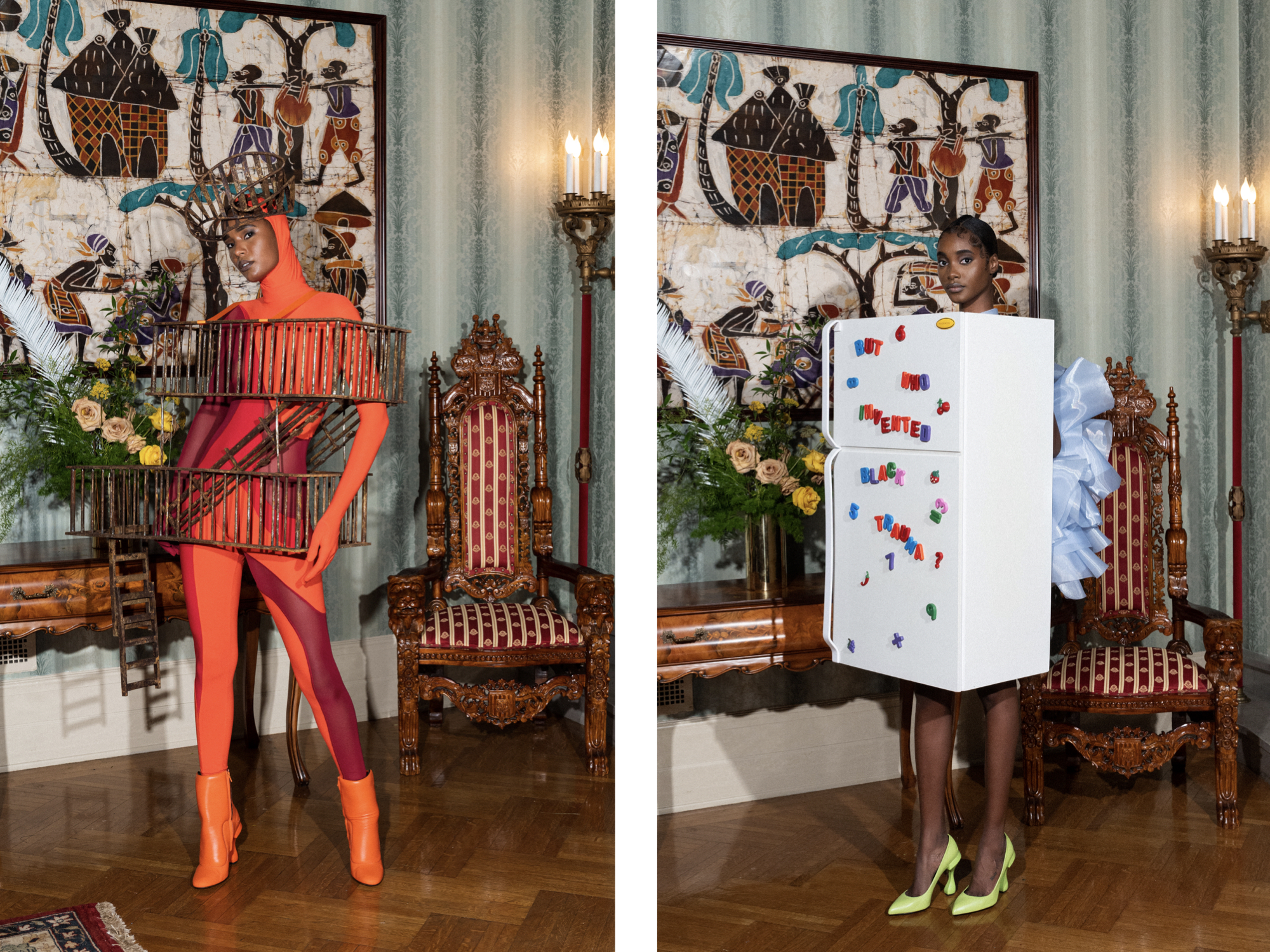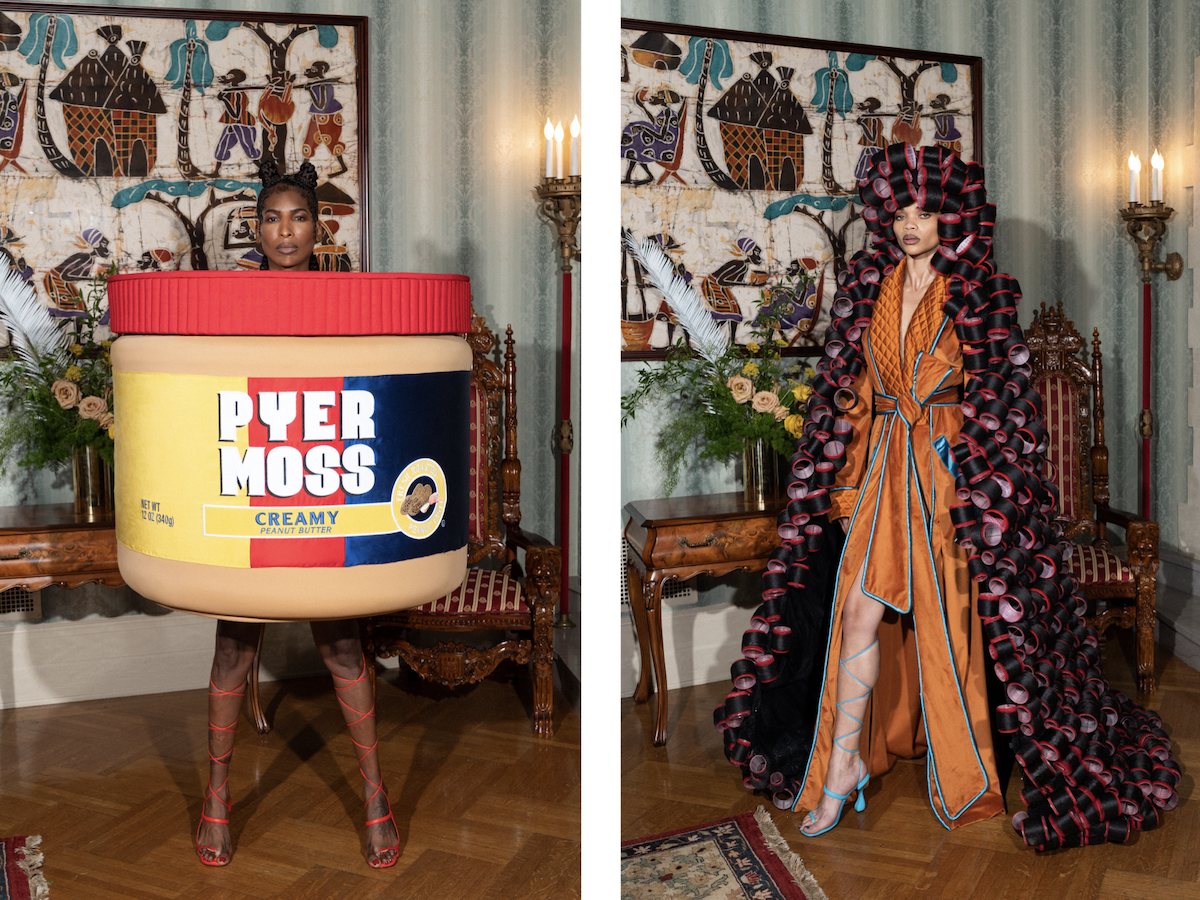Pyer Moss, the fashion label founded by Kerby Jean-Raymond, was already becoming a cultural powerhouse when France’s Paris Chambre Syndicale de la Haute Couture invited him to show a collection during Paris Couture Week. The New York designer and Surface cover star, who became the second Black American designer to show a collection in the event’s 48-year history after the late Patrick Kelly, creates garments that are often referred to as monumental; his shows, audacious and revolutionary.
His latest runway outing, called “WAT U IZ,” certainly didn’t disappoint. The live-streamed event may have been postponed by two days due to torrential downpours, but that didn’t prevent a lively crowd of eager spectators from turning up. Held at Villa Lewaro, the Palladian estate in Irvington, New York, built by Madam C.J. Walker, a child of slaves who became the first self-made millionaire in the United States, the show paid tribute to the ingenuity of Black inventors often overlooked or erased by history. It kicked off with a speech by the activist Elaine Brown, a former leader in the Black Panther Party, who asked the crowd: “Where do we go from here? Where does the freedom movement go from here?”
Perhaps the audience could look toward Jean-Raymond’s larger-than-life garments for inspiration. The meticulously constructed pieces quite literally reflected staples of everyday life that came from the ingenuity of Black inventors, but inflected with Pop Art flair: a sculptural dress mimicking a jar of peanut butter, a cape clad head to toe in hot rollers, and a refrigerator wearable with colorful letter magnets spelling out the phrase: “But who invented Black trauma?”
“We started with a completely different concept,” Jean-Raymond told AP. “Then the team went out to Joshua Tree and did ayahuasca together. Every time we made something, we sat back and thought, ‘How can we make it better?’ And every time the construction got more complicated. It’s been a long, long process to get this to where we are right now, but I’m very happy with the results.”
Though Jean-Raymond’s latest collection might not seem like couture in the traditional sense, New York Times fashion critic Vanessa Friedman observes that he’s establishing himself as a force within a new generation of designers, including Demna Gvasalia and Iris Van Herpen, that “plays by the rules of the most traditional, elitist form of fashion while at the same time reinventing them in their own image.” And Jean-Raymond’s image is one of highly considered reflections on Black history and a knack for telling his story on his own terms.


